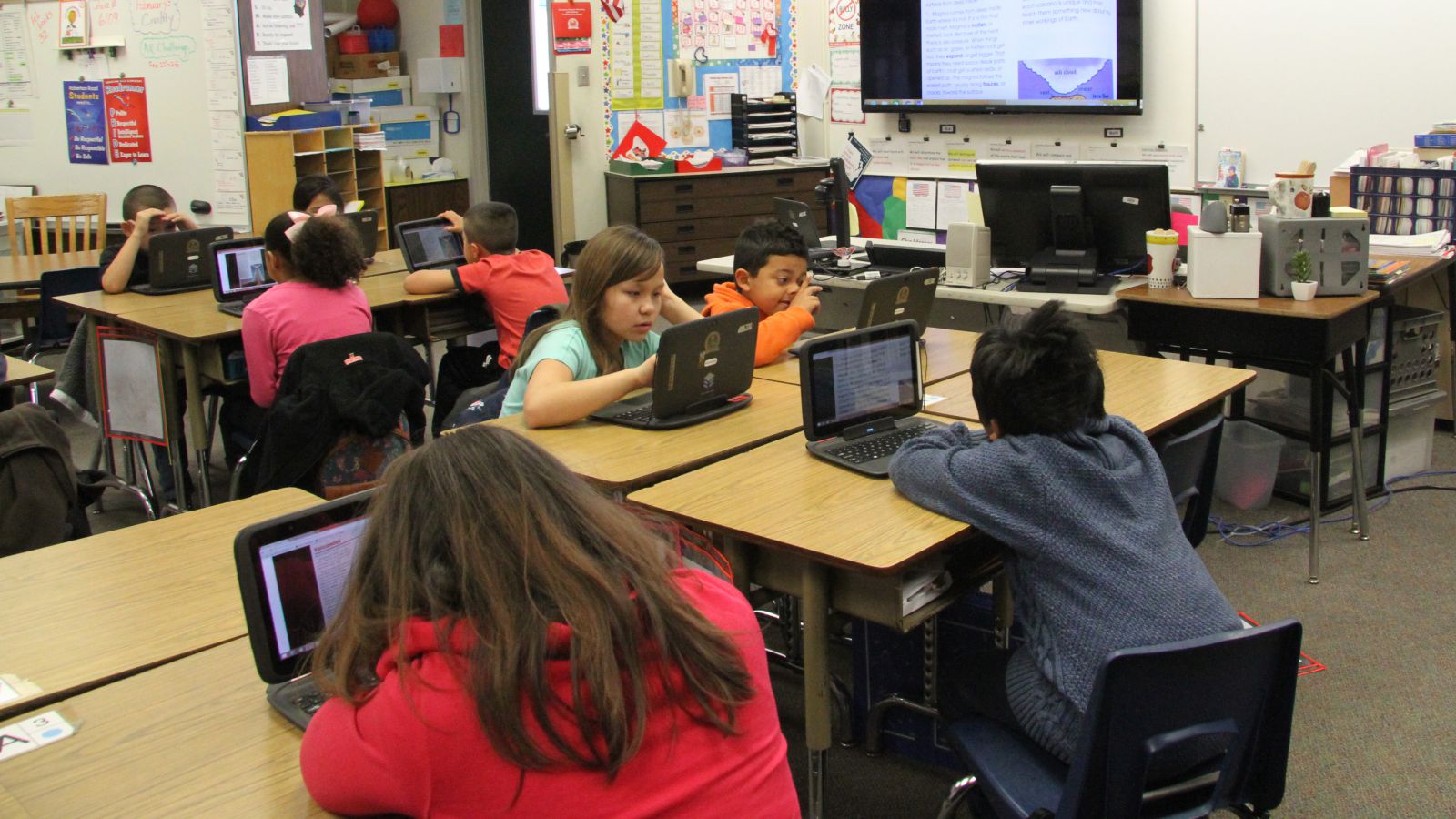Maria Langworthy, Senior Officer, Strategic Data from the Bill and Melinda Gates Foundation shares this, "Decades into the infusion with technology in education, it has become apparent that technology by itself is not an effective solution to the systemic challenges facing education today. Instead, systems and schools that define their visions with clear goals for learning, and then use technology as an enabler and accelerator of progress, find the most success."
Research Base
Future Ready Schools Initiative – 1:1 Computing
The Vision
Schools and systems that successfully transform education begin their efforts with clear visions of what they want success to mean. Vision design is the starting place for holistic transformation of education in a digital era. An effective vision is successful because it connects conversations and reminds all of those involved of the fundamental ‘why’ behind a strategy. A shared vision becomes the paddle the organization uses to steer toward the future. Future Ready Schools is a vision of a new system that relies on ubiquitous technology, but it is not about the technology.
The Evidence Base
A careful review of recent research shows a mixed result on the effectiveness of 1:1 student device initiatives.By definition, “1:1 computing” refers to the level at which access to technology is available to students and teachers; by definition, it says nothing about actual educational practices. Having a robust access ratio of one computer to one student would seemingly provide an optimal setting for the study of how educational technology can impact teaching and learning. But in reality, a true 1:1 initiative is more about leadership, planning and learning environment than it is about putting a device in the hands of a student. Of the most recent studies that involve 1:1 technology access, each 1:1 setting had its own unique “1:1 program” that comprised a set of expectations, funding mechanisms, and individual implementation models including variation in hardware, software, networking, teacher training and professional development, as well as program support. What the evidence clearly shows is that when digital tools serve in the purpose of a clear vision focused on specific learning goals, progress happens, and it happens more quickly than in the past. It is these learning goals that drive how technology is incorporated. We believe that this initiative is built upon a solid foundation of instructional methodology, supported by ubiquitous technology access and includes focused professional development.

National Education Technology Plan
“Technology is at the core of virtually every aspect of our daily lives and work, and we must leverage it to provide engaging and powerful learning experiences and content, as well as resources and assessments that measure student achievement in more complete, authentic, and meaningful ways.”
Future Ready Schools Initiative Goals

CLOSE THE DIGITAL DIVIDE GAP – Widespread use of technology in the classroom may help close the gap between students of varying economic backgrounds. Economically disadvantaged immersion students reached proficiency levels that matched the skills of advantaged control students.
TRANSITION TO DIGITAL TEXTBOOKS – The textbook market is also at the tipping point transitioning into a period of more digital text vs. hard copy. The federal government and publishers see the shift to mobile devices and tablets and are planning accordingly. In 2-3 years, there will be limited options in the “non-digital” market meaning that our students will need some device to access content.
AUTHENTIC ENGAGEMENT – What is needed is education that prepares students for the complex challenges—cultural, environmental, social, and economic—that they will face in their personal and working lives. Students need education that helps them develop critical and analytical thinking, collaborative problem-solving and teamwork skills, the ability to generate and share ideas and learn through social networks, and Information and Communications Technology (ICT) literacy.
DIGITAL CITIZENSHIP – It’s imperative that schools educate students in the area of digital responsibility and give them essential skills in order to be a good digital citizen. After all, as John Dewey said, “We need to prepare kids for their future, not our past.”
